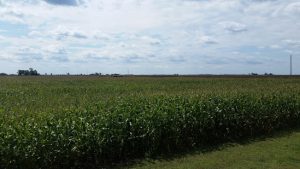Planning to plant covers this fall? Plan your residual herbicide strategy accordingly.
The increased adoption of soil residual herbicides in soybeans to control herbicide resistant weeds could result in carryover into fall planted cover crops. If you plan to plant covers this fall and had to adjust your herbicide program this spring it is a good idea to recognize the potential herbicide carryover ahead of fall cover crop planting. Over the past few years, one of the factors in poor cover crop establishment has been attributed to herbicide carryover.
There are several reasons why we should be concerned with herbicide carryover in the fall as it relates to cover crop establishment. The carryover can result in poor stand establishment, decreased fall growth, an increase in plant winterkill and reduction of cover crop benefits.
To understand herbicide carryover, we must understand the factors that influence the potential for the carryover to take place. First and foremost, the type of herbicide being used directly influences the potential for carryover. There are several online sites available (Iowa State University, University of Minnesota and University of Wisconsin) that help identify the potential interaction with herbicides and certain cover crop species. The members of the brassica (radishes, rape and turnips) and clover families are the typically the most sensitive, while cereal rye or cereals in general are typically the least sensitive.
The timing of the herbicide application in relation to the cover crop planting date can also have an effect. Typically, a minimum of 60 days between application and planting must elapse. Many of the cover crops are not evaluated for herbicide carryover when field research is conducted for support of the EPA label for the respective herbicide.
A bioassay can be completed before harvest to determine if herbicide or chemical residues are in the soil at concentrations high enough to adversely affect the cover crop growth. Simply collect soil from the area you would like to plant covers and an area with a similar soil type but with no herbicide residue and plant seed from the covers that you would like to use. Observe the growth for at least 3 weeks and if the plants look the same you should be safe to plant the field to the desired cover crop. If there is an issue with seedling germination or plant growth you should consider other cover crop species that will meet your intended goals.
Herbicide carryover will vary from year to year, largely dependent on rainfall and the time of the application. With proper planning you can increase the success of your cover crops and make wiser cover crop species selections.
Kris Reynolds,
American Farmland Trust Midwest’s Deputy Director


